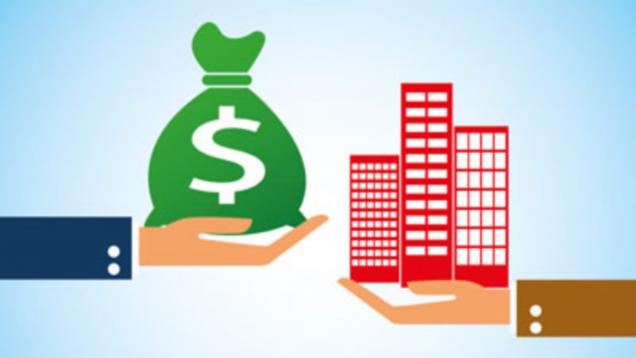
Low Doc Home Loans are still Available for the Self Employed Australian
Low Doc Home Loans – Your Guide.
If you’re a Self Employed Australian and someone who does not qualify for traditional mortgage finance solution, it’s worth considering low doc home loans that require less documentation at the time of application. The application for these low doc loans do not require you to produce documentation such as Tax Returns to back your stated income.
Low Doc Loans are available for Purchase or Refinance, Debt Consolidation and for cash out (including Tax debts).
Documents required to verify your income for a low doc home loan are:
• The interest rate for low doc home loans is going to be slightly higher than traditional loans. So, don’t be surprised even if a reputed lender specializing in such mortgage finance packages is offering low doc loans that appear expensive. But, it’s a good idea to speak directly to a company representative and find out if the interest rate can be relaxed in case your application is backed by few additional documents.
• Processing fees and other charges for low doc loans can (at times) be higher than prime bank home loans. So, make sure you’re dealing with a reputable Mortgage Broker or Lender who will provide all costs and fees in writing before processing your application.
• Risk Fees may or may not be compulsory. While a handful of lenders do not require you to have risk fees in case the Loan to Value (LVR) ratio is below 80 percent, few others may have a complete different set of rules in place. That said – it’s important to inquire about features of a low doc home loan well in advance (several days before signing on the dotted line).
• The deposit required for such loans are generally higher. In most cases, deposit is going to be in proportion to the range of benefits provided. For example, if you want a low documentation loan for property purchase or refinance at a low & flexible interest rate, you should be prepared to make a deposit as high as 30%. While most lenders offer low doc loan packages that involve minimum deposit of 20%, there’re others that will consider 15% deposit as well.
These loans (provided you’re dealing with the right lender) come with a host of features but they certainly aren’t one-for-all mortgage finance packages. If you’re unsure of whether a low doc home loan is right for you or not , consider discussing this with an experienced Low Doc Mortgage Broker. If full doc loan isn’t something you qualify for, it becomes all the more important to get the complete picture to make an informed decision.
Conclusion:
Low doc home loans offer a valuable solution for Self Employed Australians seeking quick and hassle-free access to funds. By cutting through the red tape of traditional lending processes, these loans empower entrepreneurs and self-employed individuals to secure finance. However, as with any financial decision, thorough research and careful consideration of the terms and conditions are essential to ensure that a low doc loan aligns with your personal goals and financial capacity.
If you’re a Self Employed Australian and someone who does not qualify for traditional mortgage finance solution, it’s worth considering low doc home loans that require less documentation at the time of application. The application for these low doc loans do not require you to produce documentation such as Tax Returns to back your stated income.
Low Doc Loans are available for Purchase or Refinance, Debt Consolidation and for cash out (including Tax debts).
Documents required to verify your income for a low doc home loan are:
- 6 to 12 months of Lodged BAS Statements from the ATO Portal.
- An Accountants Letter verifying your income.
- 3 to 12 months of Business bank statements.
- Lastly old tax returns (over 24 months) with current financial statements.
• The interest rate for low doc home loans is going to be slightly higher than traditional loans. So, don’t be surprised even if a reputed lender specializing in such mortgage finance packages is offering low doc loans that appear expensive. But, it’s a good idea to speak directly to a company representative and find out if the interest rate can be relaxed in case your application is backed by few additional documents.
• Processing fees and other charges for low doc loans can (at times) be higher than prime bank home loans. So, make sure you’re dealing with a reputable Mortgage Broker or Lender who will provide all costs and fees in writing before processing your application.
• Risk Fees may or may not be compulsory. While a handful of lenders do not require you to have risk fees in case the Loan to Value (LVR) ratio is below 80 percent, few others may have a complete different set of rules in place. That said – it’s important to inquire about features of a low doc home loan well in advance (several days before signing on the dotted line).
• The deposit required for such loans are generally higher. In most cases, deposit is going to be in proportion to the range of benefits provided. For example, if you want a low documentation loan for property purchase or refinance at a low & flexible interest rate, you should be prepared to make a deposit as high as 30%. While most lenders offer low doc loan packages that involve minimum deposit of 20%, there’re others that will consider 15% deposit as well.
These loans (provided you’re dealing with the right lender) come with a host of features but they certainly aren’t one-for-all mortgage finance packages. If you’re unsure of whether a low doc home loan is right for you or not , consider discussing this with an experienced Low Doc Mortgage Broker. If full doc loan isn’t something you qualify for, it becomes all the more important to get the complete picture to make an informed decision.
Conclusion:
Low doc home loans offer a valuable solution for Self Employed Australians seeking quick and hassle-free access to funds. By cutting through the red tape of traditional lending processes, these loans empower entrepreneurs and self-employed individuals to secure finance. However, as with any financial decision, thorough research and careful consideration of the terms and conditions are essential to ensure that a low doc loan aligns with your personal goals and financial capacity.



